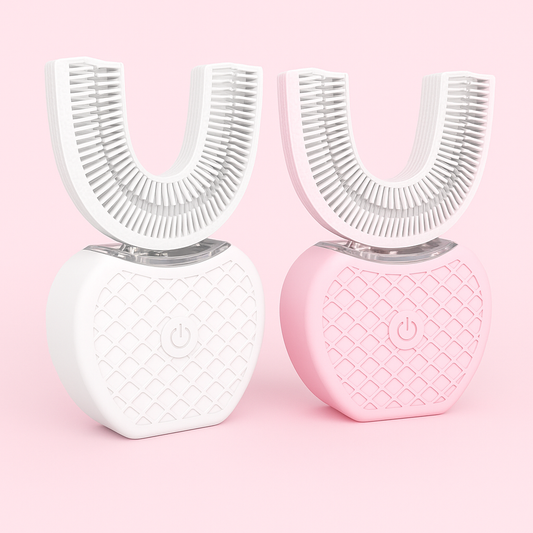Introduction: Why a fluoride-free whitening routine is trending in 2025
More people are looking for effective alternatives to conventional oral-care products. If you want a brighter smile without fluoride, a thoughtfully designed routine that combines a toothpaste with xylitol and niacinamide can help reduce surface stains, support gum comfort, and encourage a healthier oral environment. This in-depth guide explains the science behind these ingredients, how to build a safe step-by-step routine, how to choose the best products (including toothpaste without fluoride and toothpaste with xylitol), and when to see a dental professional.
What this article covers
- Clear explanations of xylitol and niacinamide and what they do for your teeth and gums.
- A practical, daily-to-monthly fluoride-free whitening routine with timings and technique.
- How to choose the best toothpaste for whiter teeth and read product labels.
- Adjuncts and lifestyle habits for long-lasting results: diet, rinses, gum care, and professional options.
- Frequently asked questions, troubleshooting, and safety guidance.
- Where to find curated, fluoride toothpaste free options (including sponsored product links).
The fluoride conversation: benefits, concerns, and balanced choices
Fluoride is a mineral that has been widely used in public health and dental products to help prevent tooth decay. However, personal preferences or specific health considerations lead some people to seek toothpaste without fluoride. If you choose a fluoride-free route, its important to compensate with strong oral hygiene habits, regular dental visits, and ingredient choices that support enamel health and the oral microbiome.
Key point: For people at higher risk of cavities (very young children, people with dry mouth, history of frequent cavities), discuss fluoride needs with your dentist before switching to a fluoride-free regimen.
Xylitol: not just a sweetener—an oral-health ally
Xylitol is a sugar alcohol commonly used as a sweetener that also has evidence-backed oral benefits. Xylitol reduces the ability of certain bacteria (especially Streptococcus mutans) to produce acid and adhere to tooth surfaces. That makes it a valuable ingredient in toothpaste with xylitol and in chewing gum used after meals.
- Benefits: Reduced plaque formation, lowered acid production, and fresher breath when used regularly.
- How it helps whitening: By reducing surface-plaque and acid-related micro-etching, xylitol indirectly helps with extrinsic stain control and maintains a cleaner surface for polishing ingredients to work on.
Niacinamide: calming, restorative, and gum-supportive
Niacinamide (vitamin B3) is increasingly included in oral-care formulas for its anti-inflammatory and mucosal-supporting properties. While niacinamide is better known in skincare, topical oral formulations can help soothe irritated gums, reduce redness, and support healthy-looking soft tissues—complementary benefits when focusing on both whitening and health.
Other whitening-friendly ingredients to watch for
- Low- to medium-abrasive polishing agents (hydrated silica, calcium carbonate): Remove extrinsic (surface) stains without excessive enamel wear. Check RDA (relative dentin abrasivity) claims when available.
- Enzymes (papain, bromelain): Biological stain-lift support that can reduce organic film on teeth.
- Baking soda (sodium bicarbonate): Mildly abrasive and alkaline, helps neutralize acids and polish surface stains in moderation.
- Hydrogen peroxide (low concentrations in some whitening pastes): Can offer mild chemical whitening for extrinsic stains—use sparingly and according to product directions.
How whitening works: extrinsic vs intrinsic stains
Understanding the difference helps set realistic expectations:
- Extrinsic stains: Surface discoloration from coffee, tea, wine, tobacco — responsive to brushing, polishing, and abrasive/enzyme-based products.
- Intrinsic stains: Deep discoloration from medications, trauma, or enamel development — often need professional treatment (bleaching, veneers).
If your teeth are primarily affected by extrinsic stains, a well-built fluoride-free routine with toothpaste with xylitol and niacinamide can produce noticeable improvements.
Step-by-step fluoride-free whitening routine (detailed)
This routine balances effectiveness with enamel and gum safety. It's tailored for people choosing toothpaste without fluoride and who want gradual, sustained whitening rather than aggressive, risky procedures.
Daily routine: Morning
- Use a soft-bristled toothbrush and a pea-sized amount of niacinamide toothpaste or a blend labeled as a good whitening toothpaste. Brush for two minutes using gentle circular motions. Avoid aggressive horizontal scrubbing that increases enamel wear.
- Spit, but avoid rinsing aggressively with water—allowing a light residue can prolong the active effects of xylitol and niacinamide.
- Optional: Finish with an alcohol-free mouthwash that includes xylitol or fluoride-free antibacterial agents for breath control. Look for labels that match "toothpaste that whitens teeth" and "fluoride toothpaste free" if you want a consistent fluoride-free routine.
Daily routine: After meals & midday maintenance
- Rinse with water after consuming acidic or staining foods (citrus, soda, red wine, coffee) to neutralize acids and reduce immediate stain-setting.
- Chew xylitol gum or use an xylitol mouth spray to reduce acid-producing bacteria and help keep surfaces cleaner between brushings.
Daily routine: Evening
- Brush for two minutes with your chosen toothpaste whitening best-rated for sensitivity and stain control. Night-time care is crucial because teeth are exposed to demineralization risk while saliva flow is lower during sleep.
- Floss or use interdental brushes to remove food particles that cause localized staining and gingival inflammation.
- Consider a topical niacinamide-containing paste or gel if your gums are red or inflamed; these products can support mucosal healing.
Weekly enhancements
- 1–2 times per week: Use a gentle whitening polish or a toothpaste that whitens teeth specifically formulated for extrinsic stain removal. Do not overuse abrasive polishes—this prevents enamel erosion.
- At-home whitening strips or gels (low-concentration peroxide) can be used intermittently. If you choose these, follow instructions carefully and avoid daily use unless directed by a dentist.
Monthly & quarterly care
- Replace your toothbrush every 3 months or earlier if bristles splay. A worn brush is less effective at stain removal.
- Schedule professional cleanings every 6 months (or as your dentist recommends). A hygienist can remove calculus and stubborn stains that at-home products cannot.
- Assess progress: If after 8–12 weeks you see little improvement, consider professional whitening consults or revisiting product choices.
Choosing the best toothpaste for whiter teeth: an evidence-based checklist
When hunting for a fluoride-free whitening toothpaste or a niacinamide toothpaste, use this checklist to compare options:
- Primary actives: Look for xylitol, niacinamide, mild abrasives (silica, baking soda), and enzymes. Avoid extremely high RDA abrasives for daily use.
- Transparency: Clear ingredient lists and clinical claims. Brands that publish clinical study results or RDA values are preferable.
- Targeted claims: If you need sensitivity support, choose products that combine desensitizing agents (e.g., potassium nitrate) with your whitening ingredients.
- Reviews and reputation: Read verified user reviews and third-party recommendations. Search for terms like "best toothpaste whitening teeth" or "best toothpaste for whiter teeth" to compare top-rated options.
- Specialty needs: If you have dry mouth, look for saliva-friendly formulations; if you smoke, prioritize strong stain-removal formulas and professional cleanings.
How to read toothpaste labels (quick guide)
- Active ingredients: These are often listed first—note concentrations if provided.
- Claims like "whitening" or "removes stains" refer mostly to extrinsic staining—be skeptical of dramatic promises without clinical data.
- Look for words: "toothpaste without fluoride", "fluoride toothpaste free", or "toothpaste with xylitol" when that matches your preference.
DIY, home remedies, and safety (what helps and what to avoid)
Some home remedies can support stain reduction; others pose risk. Use caution.
- Safe to try occasionally: Baking soda mixed into a paste for gentle polishing (use no more than 1–2 times weekly), and xylitol gum after meals.
- Avoid: Abrasive powders or acidic rinses used frequently. Lemon and other strong acids can erode enamel quickly. Overuse of abrasive scrubs accelerates wear.
- Always follow product instructions for at-home whitening gels or strips and consult your dentist if you have restorations (crowns, veneers) that wont whiten like natural teeth.
Adjuncts that boost whitening results
- Professional cleaning: Removes calculus and intrinsic deposits that at-home products can't reach.
- In-office whitening: Faster results with dentist-supervised peroxide treatments when intrinsic stains or stubborn extrinsic stains persist.
- Take-home trays from your dentist: Controlled peroxide application for stronger whitening than over-the-counter options while reducing uneven results.
Troubleshooting: sensitivity, no improvement, or gum irritation
- Sensitivity after starting a new whitening product: Reduce frequency, switch to a toothpaste for sensitive teeth that is also fluoride-free, and consult your dentist if pain persists.
- No visible improvement: Check stain sources (coffee, wine, tobacco), evaluate technique and product abrasivity, and schedule a professional cleaning.
- Gum irritation or bleeding: Stop the suspect product and get a dental checkup—niacinamide can help soothe gums, but persistent symptoms need professional assessment.
SEO-savvy product sourcing: where to shop and what to search for
When searching online, use keyword combinations proven to match user intent. Helpful search phrases include "good whitening toothpaste", "toothpaste without fluoride", "toothpaste that whitens teeth", "niacinamide toothpaste", and "toothpaste with xylitol". For curated, fluoride-free options and detailed product descriptions, look at retailer pages that focus on natural and health-conscious personal care.
For convenience, explore curated selections and trusted product lines at best toothpaste for whiter teeth and browse their fluoride-free options labeled "toothpaste without fluoride" or "toothpaste with xylitol". These links help you compare formulas and find a match for your needs.
Frequently asked questions (short answers)
- Will a fluoride-free toothpaste whiten my teeth? If your stains are extrinsic, yes—a toothpaste that whitens teeth with the right abrasives, enzymes, and xylitol can improve surface brightness over weeks.
- Is xylitol safe? Yes for humans in oral-care amounts. Keep xylitol products out of reach of pets (especially dogs), as xylitol is toxic to them.
- Can niacinamide replace fluoride for cavity prevention? No. Niacinamide supports gum comfort and inflammation reduction; fluoride's cavity-prevention role is different. Talk to your dentist about your individual caries risk.
Putting it all together: 12-week plan to a brighter, healthier smile
- Weeks 1–2: Switch to a fluoride-free toothpaste with xylitol and niacinamide. Focus on technique—two minutes, twice daily, gentle circular brushing.
- Weeks 3–6: Introduce xylitol gum after meals, use a weekly gentle polish, and reduce stain-causing foods and drinks.
- Weeks 7–12: Reassess stains. If progress is moderate, continue; if limited, book a professional cleaning or whitening consult. Maintain consistent flossing and replace your toothbrush at 3 months.
Where to buy recommended fluoride-free whitening options
If you want to explore ready-made fluoride toothpaste free and xylitol-enriched formulas, check curated selections from retailers that list ingredient specifics and product certifications. For example, you can browse top-rated fluoride-free and whitening products at toothpaste with xylitol and find options labeled for sensitivity, whitening, and gum care. These product pages often include clear ingredient lists and user reviews to help you select the best toothpaste whitening choice for your needs.
Final thoughts and safety reminders
Choosing a fluoride-free whitening routine centered on toothpaste with xylitol and niacinamide can be effective for maintaining health teeth and bright smiles—especially for people focused on natural or fluoride-free options. However, this approach works best with regular dental checkups, careful product selection, and attention to diet and habits that cause staining.
Conclusion: Ready for your Smile Reset?
If youre ready to commit to a gentle, science-informed fluoride-free regimen, start with the step-by-step plan above. Monitor how your teeth and gums respond, adjust frequency of polishing and whitening steps as needed, and seek professional care for persistent problems or intrinsic discoloration.
To get started quickly, explore curated fluoride-free whitening and xylitol-enriched toothpaste selections available from Havana Body. Browse their product offerings for targeted "best toothpaste for whiter teeth" options and other natural, health-focused oral-care items at Havana Body. If you find a formula that fits your goals, consider purchasing directly from their site to begin your Smile Reset today.
Note: This article provides general information for educational purposes and does not replace personalized dental advice. For treatment for teeth discoloration, cavities, or chronic sensitivity, consult a licensed dental professional.


